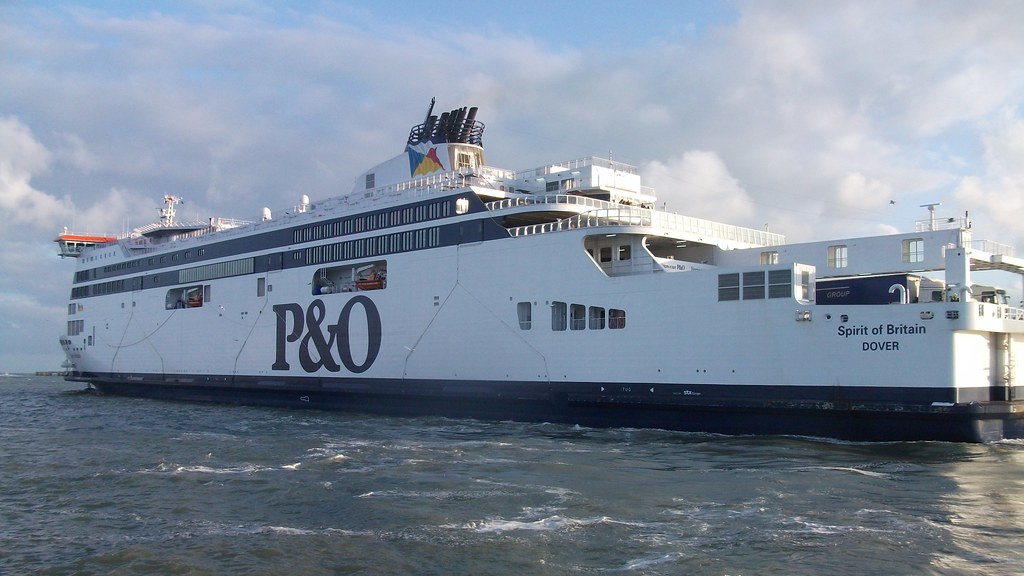This Thursday, P&O sacked 800 of its staff (many of whom are represented by the RMT and Nautilus trade unions) without notice. The decision was said to have been made “To reduce our crewing costs by 50 per cent, secure the future of our business and set it up for growth” by the P&O CEO Peter Hebblethwaite. A common theme in the coverage of this assault on workers has been to label it fire and rehire. This is erroneous. The events resemble less fire and rehire, and more a coup. While it is likely that many of the fired staff will have to apply through the agencies now responsible for supplying workers, the main purpose of P&O’s move was to replace one group of secure and unionised labour with an insecure and un-unionised one.
This would not have been possible without carefully considered planning. As the RMT have noted, P&O already had its new agency workers ready to assume duties when it informed its staff of their imminent redundancy, via a pre-recorded message from a manager (identified by the CWU as a ‘union basher’). It also had security staff on standby, ready to forcibly remove workers who were refusing to leave their ferries. All this was prepared in secret, to such an extent that the government was only informed the day before, leaving them with nothing to do but write a strongly worded letter to the CEO of P&O (with some difficulty). KPMG, the firm currently conducting an audit of P&O, was not informed at all.
This was incredibly efficient from P&O; given that their company is currently treading water financially, perhaps they should start a side-business in planning insurrections. Even if this move does have long-term consequences for P&O it will have served its main purpose of shoring up their books (that are set to be signed off in three weeks, at the end of this financial year) and allowing them to trade for a bit longer, even though they are still facing future losses and structural problems in their industry.
It is easy to point out the government’s lack of concern with organised labour, but the incident also highlights how weak UK employment law is and how pernicious anti-trade union laws are. The Trade Union and Labour Relations Consolidation Act (TULCRA) states that employers need to engage in a 45-day consultation when they are making 100 or more staff redundant. P&O did not do this; however, their penalty will be minimal, amounting to a protected award payable to all workers affected and only has to run as long as the consultation would have been. Even then, this is dependent on a time consuming employment tribunal case being brought against P&O by the workers affected.
P&O have thus been able to pay to break the law, and have ultimately decided that replacing their labour force with another was worth the cost. They have not just bought themselves a new workforce, but also (via employment agencies governed by less stringent employment protections) increased control over labour and the labour process as the agency workers have fewer employment rights.
Equally by avoiding notifying the relevant employees, P&O have prevented RMT and Nautilus copying USDAW’s tactic of taking out an injunction against their members being dismissed. The government has demonstrated that they have no interest in addressing this situation or fixing the UK’s employment law framework, whether by repealing anti-union legislation or reforming employment tribunals. Furthermore, because of anti-union legislation, there is no chance of supportive unions being able to legally take secondary action against the P&O. The result of this is a labour market built for employers where organised labour is artificially fragmented.
The impact of the tactics used by P&O go far beyond this incident, should they prove successful they could establish a new template of how to win certain industrial disputes by using pre-emptive strikes. It is not just the general practice of firing a large group of employees in one go that is significant (this is nothing new), but the finesse with which this was done; with replacement workers on standby, and hired muscle ready to remove the former employees.
The methods used by P&O are not entirely new, but it is significant that a company with their name recognition has used them. Hopefully, these tactics will not be transferable to other disputes as the labour market has become less flexible, but it is concerning. Aided by a compliant state, in terms of the law and government, P&O’s approach has removed many of the traditional levers that can be used in a labour dispute – as they have managed to remove the labour from the dispute. If this dispute is anything to go by, unions will have to employ more and more creative solutions in the future. This dispute is not too dissimilar to a lockout, and lockouts are always more brutal than strikes as it is the employer enforcing the absence of production on the worker instead of the other way round. Time will tell if the trade union movement is able to reverse the outcome of this dispute, but currently the situation does not look promising.


